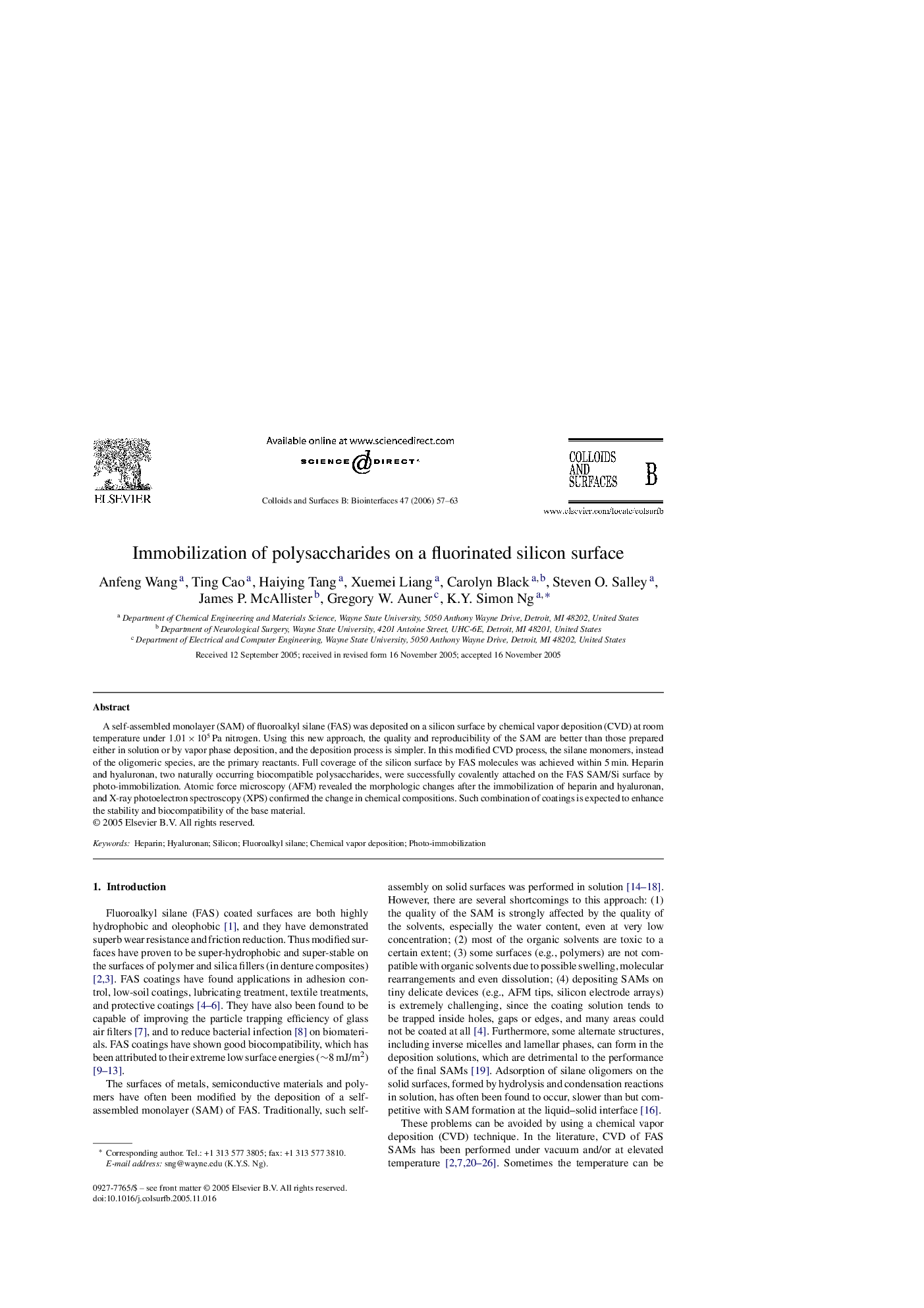| Article ID | Journal | Published Year | Pages | File Type |
|---|---|---|---|---|
| 602934 | Colloids and Surfaces B: Biointerfaces | 2017 | 7 Pages |
Abstract
A self-assembled monolayer (SAM) of fluoroalkyl silane (FAS) was deposited on a silicon surface by chemical vapor deposition (CVD) at room temperature under 1.01Â ÃÂ 105Â Pa nitrogen. Using this new approach, the quality and reproducibility of the SAM are better than those prepared either in solution or by vapor phase deposition, and the deposition process is simpler. In this modified CVD process, the silane monomers, instead of the oligomeric species, are the primary reactants. Full coverage of the silicon surface by FAS molecules was achieved within 5Â min. Heparin and hyaluronan, two naturally occurring biocompatible polysaccharides, were successfully covalently attached on the FAS SAM/Si surface by photo-immobilization. Atomic force microscopy (AFM) revealed the morphologic changes after the immobilization of heparin and hyaluronan, and X-ray photoelectron spectroscopy (XPS) confirmed the change in chemical compositions. Such combination of coatings is expected to enhance the stability and biocompatibility of the base material.
Related Topics
Physical Sciences and Engineering
Chemical Engineering
Colloid and Surface Chemistry
Authors
Anfeng Wang, Ting Cao, Haiying Tang, Xuemei Liang, Carolyn Black, Steven O. Salley, James P. McAllister, Gregory W. Auner, K.Y. Simon Ng,
